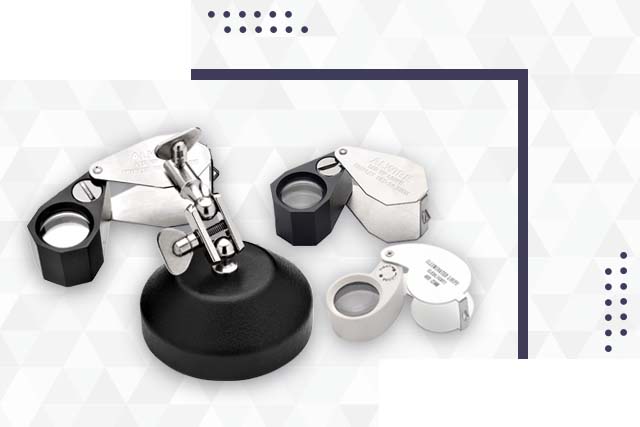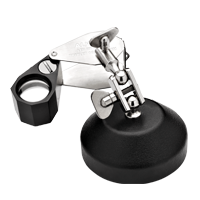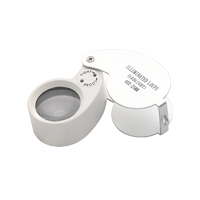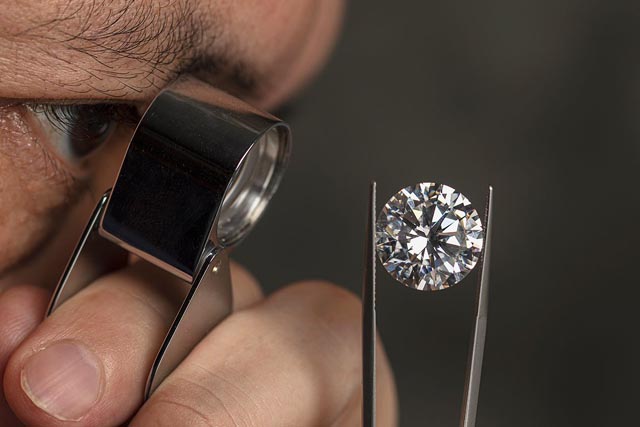What is Loupe Magnifier | Things to Consider When Choosing 2021

A perfect magnifier would be lightweight, with a large diameter, a wide-angle area, and high, distortion-free magnification
What is Loupe Magnifier?
A loupe is a simple, small magnifier used to see tiny things more carefully. Contrary to a loupe, it does not have a fastened handle, and its focal lenses are contained in an opaque cylinder or folded into an enclosure case that protects the lenses in the absence of use.


What are the Usage Areas?
A loupe magnifier is a used lens that produces a magnified image of an object. Most of the time, the lens is mounted in a frame with a handle. At first, using a jeweler's magnifying glass may feel a bit contrasting. Use the magnifying glass to not close an eye or a squint. Keep your eyes open so that your head and your eye do not strain. However, with your dominant eye, you want to view the subject. Remove your loupe from your dominant eye by one hand. For additional stability, you can rest your hand against your cheek. Bring your item below the lens with the opposite hand. You can hold your hands together for stability.
Loupe Magnifiers by Types
Most Loupe magnifiers are optical, and some are video-based.
Optical magnifiers are:
Hand-held magnifiers, stand magnifiers, telescopic, and (various kinds of) magnifying spectacles are all-optical magnifiers. Video magnifiers that are the shape of camcorders are usually used. It is also possible to use video magnifiers that are hand-held if they look like a computer device and mounted on the head.
What to Consider When Choosing?
To choose the accurate magnifier, begin by deciding on the tools to use, then set about determining the subject's size; once you have that information, analyze its features. Once you've looked over the various magnifiers, consider these variables:
- 1.Number of elements
It is OK with a single lens if the optics are clear and sharp. If you are using a higher power magnifier, you will need two or more elements to correct its other types of defects, like chromatic or spherical.
- 2.Declination angles
Loupes with a steep declination angle keep your head from tilting down to the point where it can cause injury over time.
- 3.Frame size
Frame size is challenging to obtain a good declination angle if the frame size is too small. Simply put, there isn't enough space on the lens for the manufacturer to get an ideal angle.
- 4.Measurements
Once you've decided on a frame and whether you prefer TTL or flip-up loupes, you'll need to measure your working distance and interpapillary distance.
- 5.Viewing distance
It is the distance between the magnifier and the object. This matter must be looked at when deciding what kind of work the magnifier should be used. You should use a magnifier with a long enough working distance to use it and not strain your eyes looking at the object. The small viewing distance magnifiers are considered for detail work.
- 6.Lens field of view
Through the magnifying lens. The power of magnification grows, the focal length and field of view shrink.
To achieve better results, usually low power scanning is used for large areas, and high power is used for smaller ones.
- 7.Relief for the eyes
The maximum eye distance that the magnifier can provide. The greater the length of the eye relief, the more comfortable the viewing.
- 8.Focal depth
The distance between the closest and farthest points at which a loupe magnifier in a fixed position remains focused. The more power you use, the more the depth of field decreases.
- 9.Coating
Using anti-reflection coatings on lenses will reduce the loss of light and make them more useful for low-light conditions.
- 10.Magnification
10" is assumed to be equal to the focus distance for comfortable viewing. A magnifier enhances your eye focus Because a 10" focal length brings clear vision to 1" from its peripheral view. An object appears to be twice as far away as it is. Such a magnifier is known as a 10X or 10 power. Magnifying power may vary slightly depending on working distance and the characteristics of the eye.
Alex Machine Loupes & Magnifiers
1. 10x Loop Glass Jeweler Loupe Eye Magnifier
This Magnifying Glass loupes 10x is an ideal tool for the jewelry and watchmaking industries, particularly for inspecting small objects. Excellent for repairing watches and inspecting jewelry and other things.
2. Magnifying Glasses, Jewelry Loupes, and Miniature Eyewear
The Magnifying Glass Loop is ideal for monocular use. A fantastic monocular magnifier for inspecting items. Because the focal point is too close, a binocular magnifier cannot be used. Otherwise, it works well for close-ups in monocular mode.
Check Out Our Relevant Product –Loups and Magnifiers
- Illuminated Economic Loop 45X22 mm click here.
- Loop 17 mm-10x click here.
- Loop 20.5 mm-10x click here.
- Watchmaker Lupu click here.
- Loop Stand click here.
- Illuminated Magnifier click here.
- Optivator Glasses click here.
- OIlluminated Magnifying Glasses Set click here.







